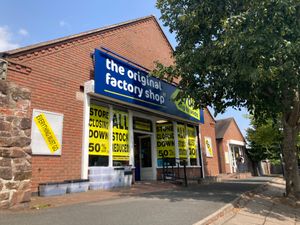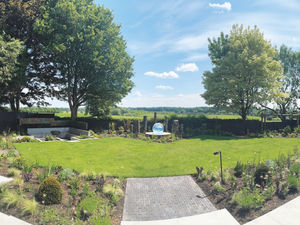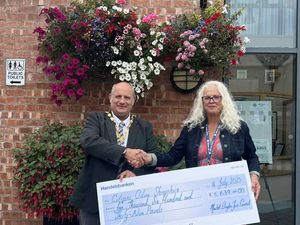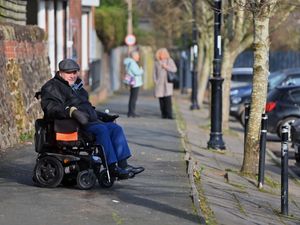Meet the civic society members on a mission to document the definitive history of Market Drayton
Drayton Civic Society was set up 47 years ago, with the aim of making a 'practical' and 'positive' contribution to the market town.
Since then, the society has set up the town centre conservation area, published three books, mounted wall plaques around the town – and set up a permanent residence for its Museum and Resource Centre on Shropshire Street.
The derelict Grade II listed building, formerly a shop dating back to the 17th Century, was purchased by the society and opened in 2007.
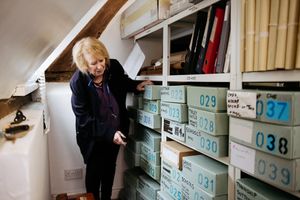
Run by a dedicated team of 18 volunteers, the museum aims to retell the stories of the Draytonians who have lived and worked in the area, for the benefit of everyone.
The written history covers Market Drayton from as early as the Bronze Age – approximately 3300 BC – all the way up to the present day.
Whether you want to research The Battle of Blore Heath in 1459, The Great Fire of Market Drayton in 1651, or the town's significant role in The Industrial Revolution, the museum holds a plethora of resources.
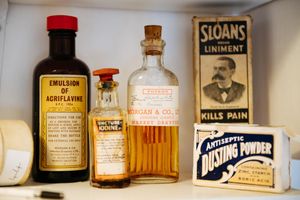
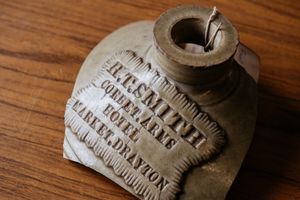
Carole Higgins, volunteer co-ordinator of the civic society, has been a member for 20 years and thinks of it as one big family where everyone is accepted.
She said: "Everything in the museum has been used or made by someone in Market Drayton. It's a huge town asset and not many can boast a museum run by a team of dedicated volunteers who have a chat and a laugh.
"The reason I've kept on going is because I love to be here. It's just a lovely place to be and I'd love more people to come in and just relax with us and tell us their stories about growing up in Drayton."
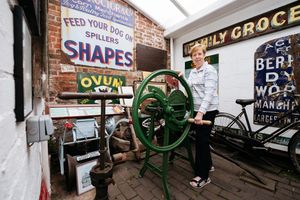
Gingerbread
Known as the home of gingerbread, Market Drayton's links to the sweet treats are thought to date back hundreds of years.
Clive of India was born near the town and is said to have brought back the ginger spice to the town's bakers, giving each bakery the chance to develop its own secret recipe.
He also negotiated trade routes directly to Britain, which was particularly attractive to merchants, as it cut out a lot of the extra expenses thus making ginger more affordable.
The first record of gingerbread being baked in the town was in the late 1700s, by Mr Rowland Ward, although Carole believes it was most likely happening prior to then.
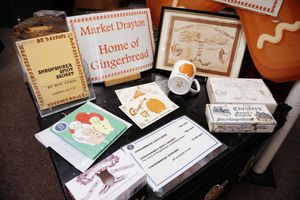
Carole said that there is a tale from the Victorian period of farmers wives who would travel into town on market day to sell their butter and cheese under The Buttercross.
At the end of the day they would go to a nearby pub and order a glass of port and gingerbread, dunking their gingerbread into the wine, enjoying a well-earned treat.
An exhibition dedicated to all things ginger and spice is available to explore at the Museum, including a booklet by Meg Pybus entitled Shropshire's Spicy Secret.
Story of Drayton
Exhibitions in the front room tell the 'Story of Drayton' in words, with artefacts that visitors can pick up, touch and even play with.
Carole said that it was important to volunteers at the museum that visitors were able to immerse themselves with some of the items on display.
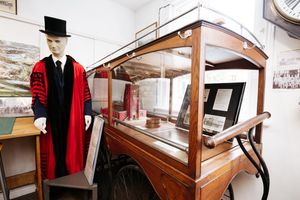
"That is the thing we are most proud of," she said, "that you can come in and play with things and people are welcome to pick things up and make themselves at home."
Carole recalled how a lady once brought in her mother, who had alzheimers, to the museum. Everyone was in tears as she picked up her childhood toys which brought memories back.
Drayton Museum exhibits more than just the recorded facts and figures, it showcases the hidden stories – the human element to every town's heritage.
"It's the stories that people want, so we're asking the local history groups who adopt these artefacts to help us tell the story of Drayton," Carole added.
Shortly before the First World War, one Draytonian man – a member of the town's cricket group – scored a century in a match. The man was said to be so pleased with his achievement that he planted a Beech Tree in the town before he was sent off to war. While the man never returned home, the beech tree remained, acting as a memorial to the man's life ever since.
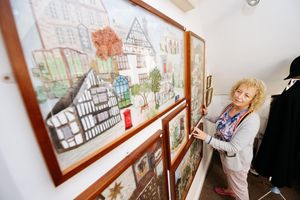
Drayton Civic Society often receive enquiries from people who are interested to know about family lineage or the history of properties within the town.
They have researchers who work behind the scenes and dedicate their time to looking through archived material, with the help of Shropshire Archives.
In the future, Carole said she would like Market Drayton societies, community groups and organisations to come together to promote and support each other's work.
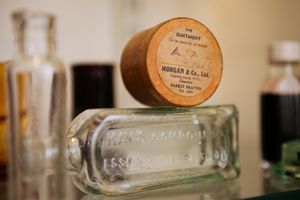
The society is currently on the look out for volunteers who could help expand their workforce and dedicate a few hours or days of their time to support the running of the museum.
The museum is currently open to the public from April to October on Saturdays from 10.30am to 1pm and Wednesdays, from 10.30am to 3pm.
It would like to open on a couple of other days in the week, if possible.
The Museum is also open to private research and educational group visits by prior arrangement.
To get in touch with the society contact draytoncivicsociety@gmail.com.

